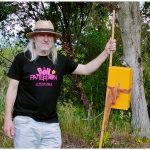Joan Casellas
Rrose Sélavy in the Underwater Pyrenees is a performance-talk that was presented “stereoscopically” at the MNAC and in issue number 500 of the magazine L’AVENÇ on 26 March 2023 with an almost magical synchrony. It is a hybrid work that brings together, in a single “communicative bundle”, photography, performance, installation and spoken and written historical research, with formal differences typical of each medium.
THE PHOTO
The action photo With Marcel Duchamp in the apse of El Burgal serves as a promotional synopsis of the Rrose Sélavy in the Underwater Pyrenees project on the MNAC’s website. The starting point of this action photo is an unpublished photographic document in the MNAC’s collection: a photograph taken by Maspons + Ubiña in the late 1950s that presents Marcel Duchamp posing in the Romanesque apse of El Burgal.
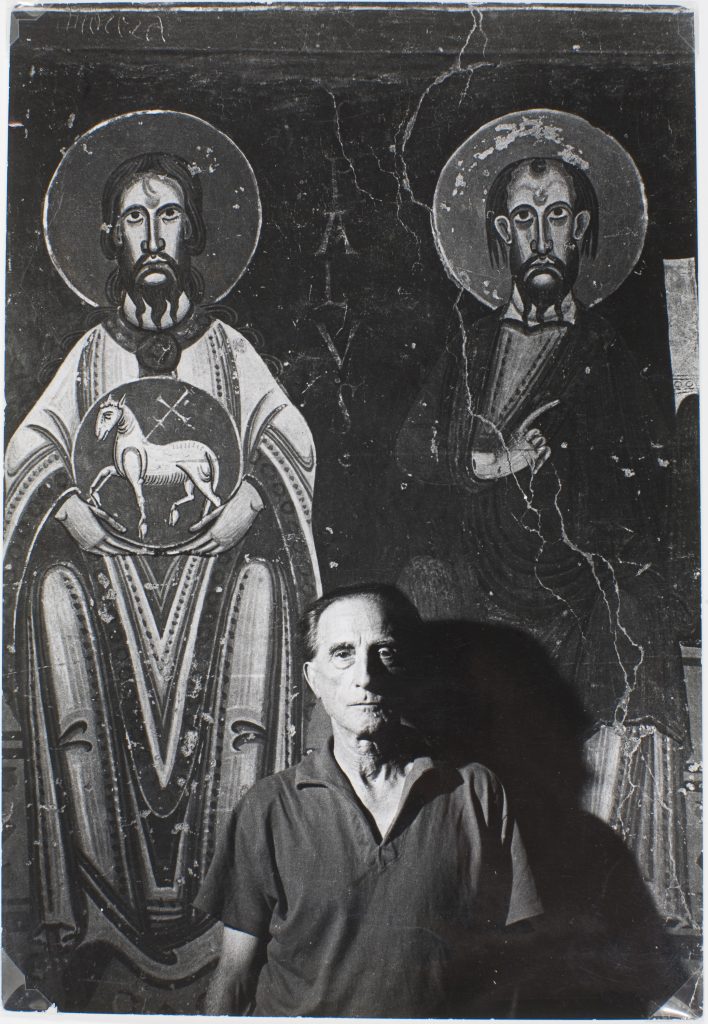
Marcel Duchamp al Museu d’Art de Catalunya (Barcelona). Oriol Maspons, Julio Ubiña, around 1960. © Oriol Maspons, Vegap, Barcelona, 2023. ©Succession Marcel Duchamp/Vegap et ADAGP, Paris, 2023
The idea of this action photo is to create a paradoxical situation: visiting the same place in the photograph by Maspons + Ubiña (the apse of El Burgal) equipped with a placard that sustains the 1:1 scale enlargement of Duchamp’s face in the photo by Maspons + Ubiña and a fragment of the Romanesque painting, which acts as a piece in a jigsaw puzzle, which when fitted in the real space connects two moments more than 63 years apart – a sort of transtemporal proto-selfie.
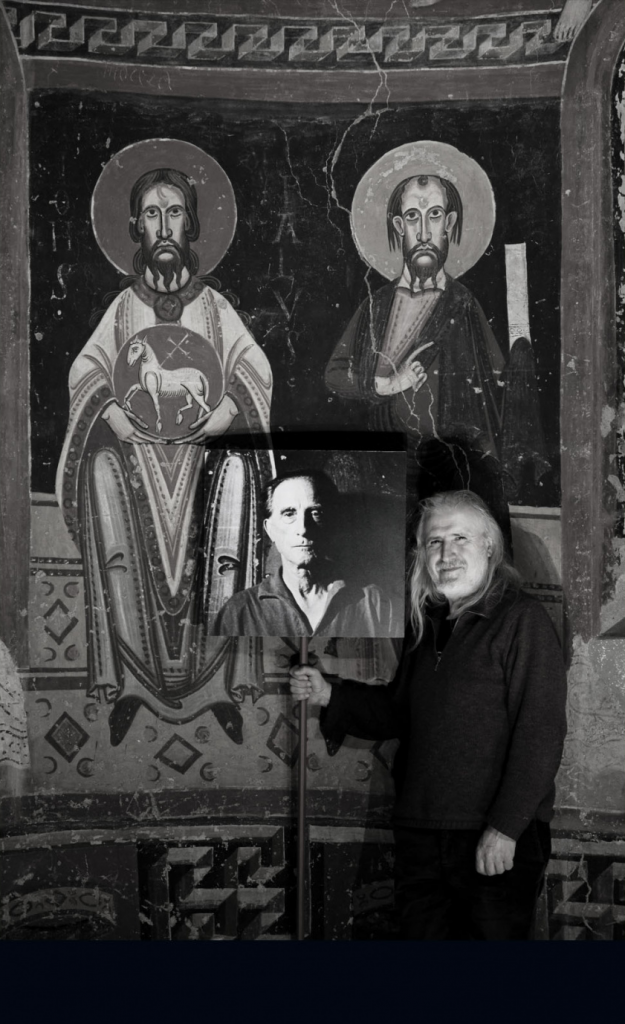
With Marcel Duchamp at the MNAC. Photo: Casellas + Alabern Arxiu Aire, 2023. Based on a portrait of Marcel Duchamp in the apse of El Burgal taken by Maspons+Ubiña. © Oriol Maspons, Vegap, Barcelona, 2023. ©Succession Marcel Duchamp/Vegap et ADAGP, Paris, 2023
This image fits perfectly with my research, based on studying Duchamp’s personal and artistic relationship with Catalonia from a series of historic photos that Duchamp causes to be taken, commissions, or takes personally.
THE PERFORMANCE–THE INSTALLATION
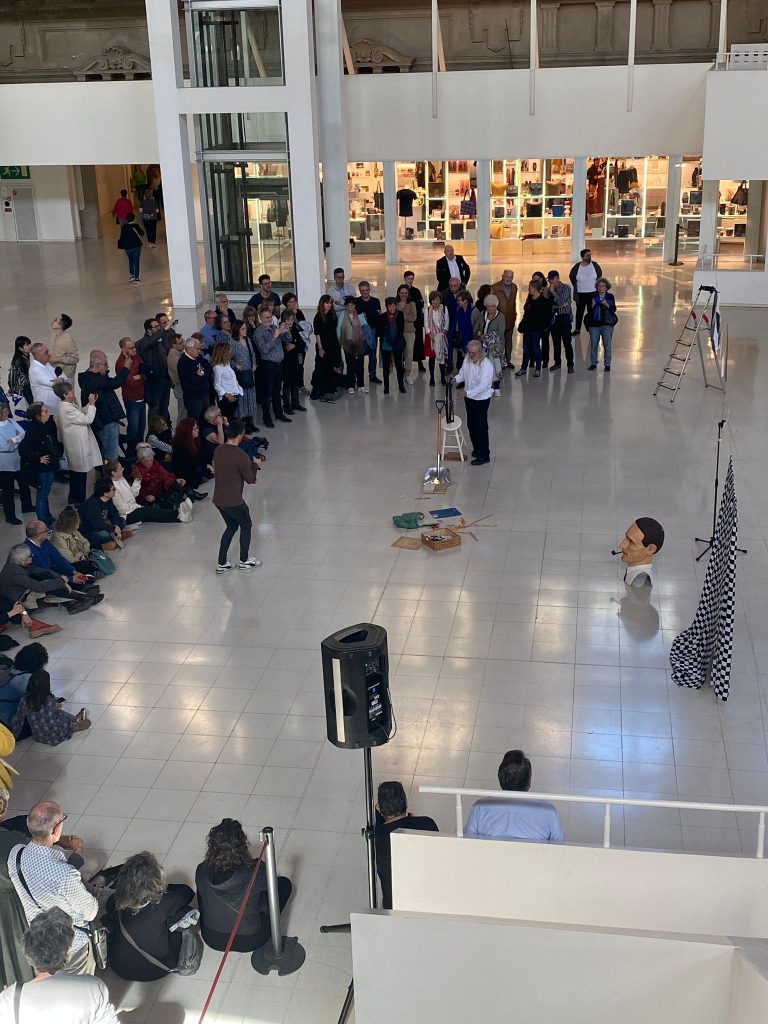
I endeavour to move at the limit of fragility, the monumental nature of the space in the Oval Hall. With the geometry of the scales of the atrium and the line of string, from one corner to the other of the Oval Hall, where the portrait-placard of Duchamp juggles and at the same time acts as a mainstay, at the point where the lines of string cross the long diameter of the hall. On this “washing line” I hang various documents: The Man Ray Enigma, What is Duchamp observing at La Caula?,(1) the complete photo of Duchamp in the apse of El Burgal by Maspons + Ubiña, a drawing of the fisherman’s knot gassa de mà (with which I have tied the string to the sides of the hall) and objects that refer to the research, as a curved line, made with an aluminium bar, that projects in 3D the pneumatic cable shutter release that Duchamp used to take the photograph of the Cap de Creus in 1933, the gridded fabric of the bundle that I use to transport all the ruses of the action – a reference to the game of chess – omnipresent in Duchamp’s life, the medieval ornamentation and in the cabalistic and alchemical speculations that Duchamp practised intuitively(2) and a continuous reference to Remedios Varo.(3)
The video records all the details. Something less “visible” is the soundtrack: the whistles, the vibration of the string, the sounds of the scattered assembled ruses, precise sentences: Cal mirar però no a simple vista (One has to look but not at first sight) (in relation to the readymade With Hidden Noise (1921), indicated by the ball of string, and hole of precision, in reference to the point where the wheel is joined to the kitchen stool in the first readymade (1913), present here with a mutant replica(4) with the snow shovel and the bricks of Étant donnés, spontaneous laughter and the sounds of the wheel/harp with the king of bastos playing card and the fingernails of my hand. On the floor a mess of bits of the Catalan flag, the green plastic bag, various pieces of iron, clothes pegs and the big head of Marcel Duchamp made by Ventura & Hosta for the last Muga Caula in 2019 www.lamugacaula.cat.
THE RESEARCH
I present various novelties arranged in seven true stories: The game of the cable and the table: Mary, Man and Rrose, about a photographic game of chance with unpublished photos of Man Ray and Duchamp; A Romanesque bell tower lost on the railway line, in which I correctly locate a photograph of Man Ray and his journey to Cadaqués in 1933; The black moon of La Caula, in which I analyse a photograph by Man Ray at La Caula waterfall, Duchamp’s favourite place in L’Empordà; The Man Ray Enigma in which I present an unpublished photo by Man Ray that details, in 1952, Duchamp’s secret work Étant donnés (1946-1966); Things are what they seem depending on what you know about them, in which I analyse Duchamp’s way of working like an illusionist magician, with the 1956 cover Le surréalisme même, as an example; The moustachioed Mona Lisa of Cadaqués, in which I analyse this almost unknown replica,(5) made in Cadaqués in 1958 and I list for the first time the 18 versions Duchamp made from 1919 to 1967, and Romanesque Duchamp, in which I present and analyse, somewhat poetically, the unpublished photo by Maspons + Ubiña of Duchamp in the apse of El Burgal.
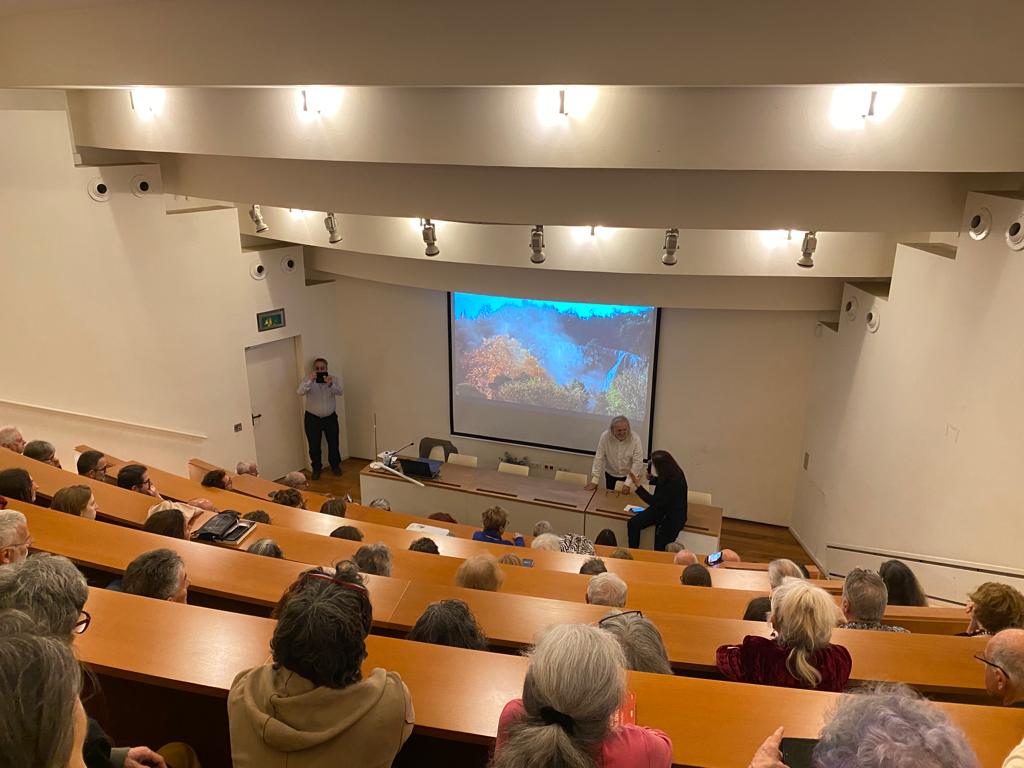
The talk is spoken, written and recorded in two videos, one that can be accessed via a QR code in the pages of L’AVENÇ and the other that documents the performance-talk on the MNAC’s website. An iconic image: steam coming from La Caula waterfall. A statement: Marcel Duchamp’s work is under the sign of Rococo Art, and a poetic sentence: olive tree twigs on the bed of the river Muga at the confluence with the La Caula torrent as a purifying and conductive element. As a photographic introduction the action photo With Marcel Duchamp in the apse of El Burgal and an extremely quick showing of the portrait monographic Catalonia Welcomes Duchamp published in issue number 196 of the magazine Bonart, for this is the key: Catalonia-Duchamp!
1 This text is not part of the talk. I presented it orally at a conference at the University of Girona on 13 May 2019 and I published a plaquette from it, in the last edition of Muga Caula, in September 2019. Since then I have withdrawn the edition to I order to make a few changes in the text. What I posted here was the visual part that explains everything.
2 As explained by Arturo Schwarz in the complete works and Duchamp explains it to Pierre Cabanne. I simply make a visual note of it.
3 With this cloth I have performed several actions related to both Duchamp and Remedios Varo.
4 This sculpture-conference; VSMDPF created in 2015, brings together two readymades by Duchamp; the wheel (1913) and the Snow Shovel (1915) with the two kinds of bricks Duchamp used for Étant donnés (1946-1966) the Catalan and the English brick.
5 In 1984 it was exhibited at the Miró Foundation in Barcelona in the exhibition Duchamp, but it was not published until 2017 in the exhibition catalogue Dalí & Duchamp at the Royal Academy in London, with an 11×7 cm reproduction. I now present it in context to the other versions, published full page in L’Avenç (24 x 15 cm).
Investigador i artista

